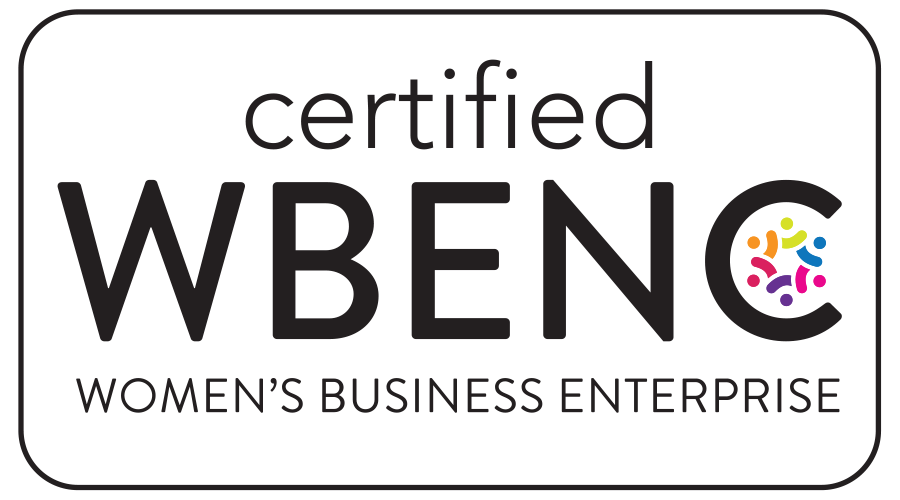Workforce-Driven Site Selection

Workforce-Driven Site Selection
A large, growing, and well-qualified workforce is essential to ongoing economic expansion.
Lightcast’s Talent Attraction Scorecard ranks states on seven components. The analysis looks at overall job growth over the past five years at an occupational level, then becomes more specific by delving into the numbers in high-earnings categories and blue-collar categories. Growth in the college-educated population and prime-age (25-54) population is considered, as well as people arriving with incomes above $25,000 per year. How an area is performing as a result of competitive advantages rather than overall national trends is also part of the ranking.
(Moscow, ID) – September 15, 2025 – Florida has solidified its position as the nation’s top state for talent attraction, with Texas close behind at No. 2, according to Lightcast’s 2025 Talent Attraction Scorecard—marking a decade since the company first began tracking these critical workforce migration patterns.
This 10th anniversary edition reveals that the Sunbelt and Mountain West continue their dominance in attracting workers, with eight of the top 10 states located in these regions. Wyoming leapfrogged into the top 5 at No. 4, joining neighboring Idaho at No. 3, while Nevada, Arizona, Utah, and Montana round out the top 10 alongside the District of Columbia and Delaware.
“A decade ago, talent attraction was emerging as a new concept in economic development,” said Josh Wright, Executive Vice President of Growth at Lightcast. “Today, it’s become the foundation of regional competitiveness. With demographic shifts, remote work, and evolving worker preferences reshaping the landscape, data-driven talent strategies aren’t just helpful; they’re essential for community survival and growth.”
Lightcast presented this data on Tuesday, September 16, at the International Economic Development Council (IEDC) Annual Conference in Detroit, offering attendees an inside look at the newest trends shaping US talent mobility. Wright will be joined by Cecelia Thompson, Executive Director at Action Greensboro, to share new findings on migration, education, and job growth trends—and how to turn those insights into action.
Texas and Florida Lead Metropolitan Rankings
The dominance of Texas and Florida extends to the metropolitan level, where these two states claim eight of the top 10 large metropolitan statistical areas (MSAs). Texas claims three spots with Dallas-Fort Worth at No. 1, Austin at No. 2, and Houston at No. 6. Florida claims all seven of the remaining top 10.
Six Key Trends Shaping 2025 Workforce Migration
This year’s scorecard identifies six critical trends driving talent attraction:
- Sunbelt and Mountain West Dominance: Nineteen of the top 20 large metros are located in the Sunbelt, with only three of the top 50 metros of any size located outside these regions.
- Retirement Destinations Face Mixed Outcomes: Communities like The Villages, Florida (#1 mid-sized metro), benefit from retiree influx but face long-term workforce risks as populations age.
- Remote Work Transforms Competition: With 14% of workers now remote nationally—reaching 28% in places like Boulder, Colorado—communities must attract individuals, not just employers.
- Blue-Collar Worker Shortages: Fast-growing regions struggle to fill essential trades positions despite overall population growth, creating infrastructure and housing development bottlenecks.
- Tech Jobs Drive Diversification: Emerging tech hubs like Miami and Raleigh outperform traditional centers like San Francisco and Seattle in talent attraction.
- Anchor Institution Risks: While universities, hospitals, and military bases attract talent, over-reliance creates vulnerability to closures or downsizing.
Methodology and Measurement
The Talent Attraction Scorecard evaluates all 50 states and more than 900 metropolitan and micropolitan areas across seven equally weighted components: overall job growth, growth in college-level jobs, growth in blue-collar jobs, growth in high-earning jobs, regional competitiveness, attraction of earners, and attraction of prime-age talent (ages 25-54). It uses a combination of proprietary Lightcast data and government statistics, including Census information that has been analyzed and refined by Lightcast.
Top 10 States for Talent Attraction:
- Florida
- Texas
- Idaho
- Wyoming
- Nevada
- District of Columbia
- Arizona
- Delaware
- Utah
- Montana
Bottom 10 States for Talent Attraction:
Note: Including the District of Columbia in state rankings resulted in 51 total “states.”
- Massachusetts
- Ohio
- Indiana
- Iowa
- Minnesota
- Wisconsin
- Michigan
- New York
- Illinois
- California
Top 10 Large MSAs (250,000+ population):
- Dallas-Fort Worth-Arlington, TX
- Austin-Round Rock-San Marcos, TX
- Miami-Fort Lauderdale-West Palm Beach, FL
- Orlando-Kissimmee-Sanford, FL
- Crestview-Fort Walton Beach-Destin, FL
- Houston-Pasadena-The Woodlands, TX
- North Port-Bradenton-Sarasota, FL
- Tampa-St. Petersburg-Clearwater, FL
- Lakeland-Winter Haven, FL
- Naples-Marco Island, FL
Bottom 10 Large MSAs (250,000+ population):
- Rockford, IL
- Springfield, MA
- Minneapolis-St. Paul-Bloomington, MN-WI196. Los Angeles-Long Beach-Anaheim, CA
- Detroit-Warren-Dearborn, MI
- Boston-Cambridge-Newton, MA-NH
- Pittsburgh, PA
- San Francisco-Oakland-Fremont, CA
- Chicago-Naperville-Elgin, IL-IN
- New York-Newark-Jersey City, NY-NJ
- Los Angeles-Long Beach-Anaheim, CA
Top 10 Mid-Sized MSAs (100,000-250,000 people)
- Wildwood-The Villages, FL
- St. George, UT
- Cheyenne, WY
- Panama City-Panama City Beach, FL
- Punta Gorda, FL
- Anderson Creek, NC
- Jacksonville, NC
- Bozeman, MT
- Sebastian-Vero Beach-West Vero Corridor, FL
- Coeur d’Alene, ID
Top 10 Small MSAs (50,000-100,000 people)
- Jefferson, GA
- Edwards, CO
- Heber, UT
- Fort Leonard Wood, MO
- Granbury, TX
- Cedar City, UT
- Hinesville, GA
- Palestine, TX
- Pahrump, NV
- Starkville, MS
The complete rankings and interactive analysis tools are available at lightcast.io/talent-attraction-scorecard-25-full-rankings.
About the Scorecard’s Impact
Over the past decade, the Talent Attraction Scorecard has evolved from highlighting an emerging trend to providing essential intelligence for economic development strategies. Communities using Lightcast data have successfully leveraged insights to secure millions in investment, develop targeted workforce programs, and build compelling cases for business attraction and retention.
“The Talent Attraction Scorecard isn’t just about where communities stand; it’s about providing the roadmap for where they want to go,” Wright added. “After 10 years of tracking these patterns, we’re seeing communities use this data not just to understand migration, but to actively shape their economic futures.”
About Lightcast
Lightcast is the global leader in labor market intelligence, empowering smarter decisions for businesses, education institutions, and governments worldwide. With the world’s most comprehensive database—spanning over 3 billion job postings, 500 million career profiles, and more than 100 government sources—Lightcast delivers unparalleled insight into skills, jobs, companies, professional profiles, and workforce trends across 165 countries. Our proprietary taxonomies, advanced AI, and expert guidance transform complex data into clear, actionable intelligence.
Lightcast has offices in the United States, the United Kingdom, Canada, Italy, New Zealand, and India. Learn more at lightcast.io.
The 2025 Talent Attraction Scorecard makes one thing clear: communities that thrive don’t just attract employers—they attract people. In today’s economy, talent attraction is the currency of competitiveness, and leaders who understand this are reshaping the future of business, infrastructure, and innovation. Florida and Texas are leading the charge, while states like Indiana, Illinois, and California are falling behind. The difference? Strategic action. From remote work to blue-collar shortages, the trends are clear—and the stakes are high.Talent Is the New Currency—Are You Investing Wisely?
-
Identify optimal locations aligned with workforce trends and business goals
-
Negotiate incentive packages that exceed expectations and drive ROI
-
Shape your talent strategy to attract and retain the workforce of tomorrow
Don’t just follow the migration – lead it.

 Follow Us
Follow Us
 Ashmore Consulting is proud to join Pledge 1%, a global movement creating new normal where companies of all sizes integrate giving back into their culture and values. Pledge 1% empowers companies to donate 1% of product, 1% of equity, 1% of profit or 1% of employee time to causes of their choice. Over 1,500 companies in 40 countries have taken the Pledge and committed to give to communities around the world. Ashmore Consulting is excited to join Pledge 1%’s network of founders, entrepreneurs and companies around the globe that have committed to giving back.
Ashmore Consulting is proud to join Pledge 1%, a global movement creating new normal where companies of all sizes integrate giving back into their culture and values. Pledge 1% empowers companies to donate 1% of product, 1% of equity, 1% of profit or 1% of employee time to causes of their choice. Over 1,500 companies in 40 countries have taken the Pledge and committed to give to communities around the world. Ashmore Consulting is excited to join Pledge 1%’s network of founders, entrepreneurs and companies around the globe that have committed to giving back.


